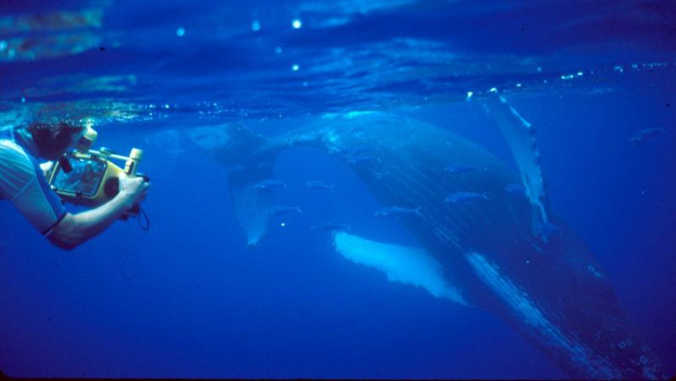
It is well established that humpback whale mothers with newborn calves favor shallow waters in their breeding grounds. Research from the University of Hawaiʻi at Hilo indicates that this appears to be a tactic employed by mothers to avoid energetically costly associations with males.
Adam Pack, a UH Hilo professor and expert in North Pacific humpback whales in the Hawaiian Islands, points out in an article in Science Trends that it is not known how this shallow water preference varies as a calf ages and grows and whether mothers, who are less likely to ovulate than females without a calf, employ other tactics to avoid males when in deeper waters.

In 2017, Pack and a team of colleagues measured the lengths of 96 humpback whale calves in waters off Maui, Hawaiʻi ranging in size from 3.8 to 7.6 meters. They found that the depth of water that a mother and her calf occupy is positively related to the size of the calf, so individual females tend to be found in deeper waters as their calves mature. To confirm this, the team also examined the habitat preferences of 72 mother-calf pairs who were resighted over various intervals within a breeding season.
“Interestingly, the team also found that when mother-calf pairs were in deeper waters they had a preference for rugged seabed terrain,” writes Pack.
The researchers suspect that this kind of terrain provides more “acoustic camouflage” from males than does flat terrain as it tends to be noisier from snapping shrimp. The team posits that this might help mothers avoid harassment from males seeking mating opportunities by making it less likely that they are overheard communicating with their calves.
“This final bit is very intriguing as it may indicate a strategy evolved in mothers for mitigating male harassment while preparing (in deeper waters) for emigration back to the feeding grounds,” writes Pack.
These findings were reported in the journal Animal Behaviour in the article “Habitat preferences by individual humpback whale mothers in the Hawaiian breeding grounds vary with the age and size of their calves.”
In addition to Pack, two other UH researchers involved in the study were UH Mānoa’s Louis Herman and UH Hilo’s Carley Lowe.
For more, go to UH Hilo Stories.
—From UH Hilo Stories

